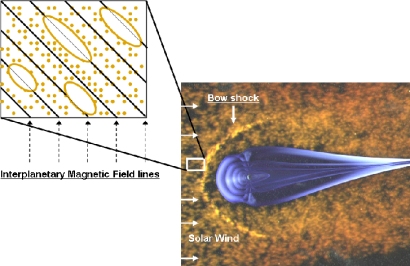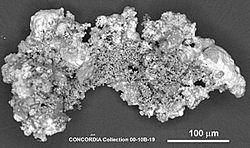Solar Systems: the amazing phenomenon
Few people think that each planet is alike, but some folks think that the basic stuff planets are made out of is the same. But giant planets are different in quality as well as quantity. Small planets and moons can be made of rock and ice depending on where they formed. Worlds distant from the Sun are more ice than rock because at very cold temperatures, ice is common and very strong. Worlds close to the Sun can’t be made of ice, so they are mostly made of rock and metal, as well as types of gas.
Our solar system is an amazing phenomenon. The solar system is a thing of beauty, and worth studying and sharing. People think that the other planets are unimportant, thinking that planets beside Earth are useless because they have no outer resources or life, but some have valuable information hidden deep inside them. Astronomers figured out that the further you are away from the Sun, the more the planets are made of ice. Also, the closer you are to the Sun, the less the planets are made of ice, more made out of rock and metal to probably keep the planets from disappearing.
Gas giants are more like stars than rocky planets because they are mostly made of hydrogen and helium, not rock, metal, or ice. The gas giants stay not so far from their creator star, but the rocky planets stay somewhat far from their creator stars. Earth has many similarities to its nearby planets, Mars and Venus. But one thing that really sets Earth apart from those nearby planets is that our Earth has a freakishly large moon.
The Copernican Principle states that the Earth and the other planets revolve around the sun, and that we don’t live in the center of the universe. So basically, Copernicus states that the other planets and the sun don’t revolve around us: we revolve around the sun. We don’t own a particular time and place; it belongs to the universe. This is very mind-boggling, because, of what you think is yours, all belongs to the universe. In five hundred years, this principle has worked well. For instance, the government doesn’t own the land, the universe owns the land, so even illegal immigrants deserve to live here.
In the Milky Way galaxy, a star exploded which expelled massive amounts of gas and dust. This supernova, which these explosions are called, happed around 5 billion years ago. The damage from the supernova crashed into a nearby cloud of gas, which were the ingredients to make our solar system we know today. Our planets have different features, some are the same, and some can be complete opposites. Jupiter has 1,400 times the volume of our Earth but its mass is only 318 times the mass of earth. That means that the density of Jupiter is about ¼ bigger more than the Earth, which means that the giant planet must be made of gas, not metals and rocks which Earth and the other inner planets are made of. Once every 11.9 Earth years, Jupiter does one full orbit around the sun at a mean distance of 5.2 times greater than one astronomical unit even though it rotates on its axis every 9.9 hours, which makes a bulge at Jupiter’s equator visible with a telescope. Colorful latitudinal bands (atmospheric clouds), and storms make Jupiter’s dynamic weather system, which means the cloud patterns change in a matter of hours or days.
Jupiter has a giant, complex, and powerful magnetic field that is thought to arise by electrical currents in the rapid spinning hydrogen and metallic core. Earth has a powerful magnetic field, but at the top of Jupiter’s clouds, Jupiter’s magnetic field tops Earth’s by being 10 times stronger, with some different features, the other factors, or of the fields having no counterpart to the strength of its magnetic field. The strength and complexity of Earth’s magnetic field is thought to be related in some way to the fast rotation and colossal metallic core from Jupiter. Jupiter’s magnetic field is donut shaped, which holds bigger versions of Earth’s Van Allen Belts; these hold high-energy particles like electrons and protons. Because of these forces are linked with the rapid rotation of Jupiter and the magnetic fields around it, those belts are flattened into plasma sheets in Jupiter’s case. That field rotates about a nine-hour rotation period around the planet. The satellites, Io, Amalthea, Ganymede, and Europa all are in this region, and they are affected by the magnetic field and particle-charged belts – for example, the surface of Io is being eroded by the collision of those particles as it continues its orbit. The magnetosphere of Jupiter, which is the region of space ruled by Jupiter’s magnetic field, is colossal. It interacts with the solar wind from the Sun as far as 7 million kilometers from Jupiter, forming a “bow shock” like a bow of a ship.
Venus is the second planet from the Sun, which means it is made of rock, not metal, gas, or ice, because the gas would disperse, and the ice and metal would melt. The planet is named after the Roman goddess of beauty and love, Venus, also known as Aphrodite in Greek myth, because it shines brighter and more beautifully than the other planets. It is also the only planet named after a female, which is very interesting because it gives females bragging rights to have technically a female planet. In ancient times, Venus was thought to be two different stars, the morning and the evening star, for they appear then, hence the names, but in Latin, they are called Vesper and Lucifer. Lucifer means “Light-bringer” in Latin.
Venus and Earth are sometimes called twins because they are the same size, have around the same mass and density, composition, and possess in similar gravitational fields. But the similarities stop there. Venus is the hottest planet in the solar system, even though it isn’t the closest to the sun. Its thick atmosphere traps heat, sort of like the greenhouse effect. It can reach a temperature of 850 degrees F, which can melt lead. Most of the exploratory probes sent from Earth last only a few hours until burning. Venus has basically a hellish atmosphere, mainly made of sulfuric clouds and carbon dioxide, and scientists have only found tiny bits of water in the atmosphere. The atmosphere is heavier than any atmosphere in the solar system, which means the surface pressure is 90 times more powerful than on Earth. If one were to stand there, it might feel like stepping in brick shoes.
The terrain of Venus is extremely dry. If there were any liquid water on the surface, it would all evaporate in a couple of seconds. About 2/3 of the surface is flat, smooth plains covered with thousands of volcanoes ranging from .5 miles to 150 miles wide. The lava creates deep canals stretching as long as 3,000 miles! These canals are longer than any other planet’s canals in the solar system. Venus really outshines most of the planets in a unique way.

Instead of an atmosphere, Mercury possesses a thin exosphere made up of atoms blasted off the surface by the solar wind, and by striking micrometeoroids. Because of solar radiation pressure, the atoms quickly escape into space and form a tail of neutral particles. Even though Mercury’s surface possesses a magnetic field of 1% of Earth’s strength, it interacts with the solar wind’s magnetic field to create strong magnetic tornadoes that funnel the hot solar wind plasma down to the surface. When the ions strike the surface, they knock off neutrally charged atoms and send them on a loop high into the sky.
A Micrometeorite: 
Mercury is the closest to the Sun and second smallest of the nine planets in the Solar System, with an orbital period of Earth’s 88-day period. Seen from Earth, it looks to have a 116-day orbit, which is the fastest spinning planet in the solar system. This fast motion led it to be named after the fast Roman messenger to the gods named Mercury. Because of the lack of an atmosphere, it can’t hold heat, so it has a very varied heat from 100K(-280°F and -173°C ) and 700K (427°C and 800°F) at the equatorial region. Mercury’s axis has a small tilt of any planet in the Solar System but it has the largest orbital eccentricity, which is an astronomical object is a parameter that forms the amount by which its orbits in a perfect circle. At aphelion, it is about 1.5 times as far from the Sun as it is from an aphelion. Mercury’s surface is full of craters, like our Moon, which means that it was geologically inactive for billions of years.
Mercury’s eccentric orbit takes the puny planet near 29 million miles or 47 million kilometers and also as far as 43 million miles or 70 million kilometers from the sun. The concept of seeing the sun on Mercury at the closest point is that the sun would appear three times larger than it seems on Earth. But on the frigid surface when you are at the furthest point, the sun might appear just as a supernova is happening and never stops, that might just be the size of it. The temperature of Mercury’s surface can reach up to 430 degrees Celsius or 800 degrees Fahrenheit; however, because of the lack of an atmosphere to trap in the heat, the temperatures at night on the surface can drop to -290 degrees Fahrenheit or -180 degrees Celsius. The period of time it takes from sunrise to sunset takes 175.97 Earth days, which means if Mercury speeds around the sun every 88 days, it takes about 15,485 Earth days for it to make a lap around the Sun, or around 43 Earth years.
Replacing an atmosphere, Mercury has a thin exosphere made up of atoms blown off the surface by solar winds and attacking micrometeroroids. Even though Mercury’s surface has a magnetic field has a small 1% of Earth’s strength, it interacts with the solar wind’s magnetic field to create strong magnetic tornadoes that funnel the hot and fast solar wind plasma down to the surface.
Pluto is called a dwarf planet because of its small size. It orbits the sun like a regular planet, but is abnormally small. Because of its size, it cannot clear objects out of its path. Pluto is more than 3.6 billion miles away from the sun, which is about 40 times as far from the sun as Earth. Pluto orbits the sun in a racetrack-like way, which means that it can be closer to the sun than other times. But even at the closest point, Pluto is still a billion miles away. Pluto is part of the Kuiper Belt which is made of other small, icy objects like Pluto, which is like thousands of mini Plutos in one region.
So I hope in this essay you learned new facts and found a new interest. People very enjoy the solar system we live in and how it works, it’s appearance, and the differences between the planets. And maybe if you research it as well, you will find other different facts that will amaze and blow you away.
